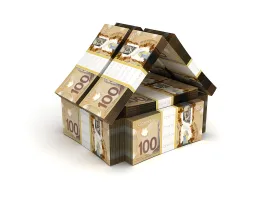This B.C. woman with $5.8 million in assets can lock in a lavish retirement — if she sells her home
While Lucy is wealthy, she has more risk than she recognizes

Lucy has a clear choice of living in the house or selling for $3.2 million plus any appreciation less selling costs at some future date.
Author of the article: Andrew Allentuck
A woman we’ll call Lucy, 68, lives in B.C. Retired, she had $90,680 gross income in 2020 and $5,735,700 in total assets, most of it in her $3.2 million Lower Mainland house. Her financial assets total $2,867,200 — about 30 per cent in U.S. stocks. Her expenses — $13,306 per month or $159,672 per year, exceed her income, though $25,200 per year spending on house repairs can count as capital improvements.
Lucy’s net worth is $4.84 million. She is in an enviable position of affluence, but she carries risks in her leveraged investments. Her risk management, including investing in stock options, has generated fine returns, but she could have a hard time recovering from a future crash due to her age. Lucy wants to maintain her standard of living and sustain spending of $160,000 per year to age 95, but she needs to decide where she will live and to match her choice to her future income.
“I hope to have enough money to live in a higher-end retirement community that offers social and wellness activities or to stay in my home and pay for assistance,” Lucy explains.
The dilemma
For now, she recognizes that staying in her house and paying her outstanding $650,000 mortgage with a 1.69 per cent interest rate amortized over 25 years — which costs her $34,644 per year — will affect her spending plans.She also has some debt in the form of $38,000 in property taxes deferred by a B.C. program for seniors. The deferred property taxes accumulate at $9,000 per year — she has to allocate money to pay them by the time she sells her house or the house is sold for her by her estate.
Family Finance asked Derek Moran, head of Smarter Financial Planning Ltd. in Kelowna, B.C., to work with Lucy. His view, in a nutshell, is that while Lucy is wealthy and will be comfortable in retirement no matter what, she has more risk than she recognizes. “She is unlikely to get everything she wants. Something may have to give.”
The house, her largest asset, is a conundrum, for no one can predict its price in a decade or so when she thinks she might move into the seniors home.
Will Lucy have to sell her house? To reach her after-tax income goal on her $2,293,000 of financial assets, she would have to earn a return of seven per cent. That can be hard to sustain. Moreover, the clawback, 15 per cent of income of $79,845 and over and indexed to inflation, would take back all of her OAS. The house, which is a rather average older home, requires $25,200 in repairs plus racks up regular utility bills that total $5,040 per year. Lucy has to pay all costs and taxes herself and has no one with whom to split income.
The $3.2 million house represents 58 per cent of her total assets. She has never rented out any part of it. She paid $2.6 million for it, so the $580,000 capital gain would be all hers tax-free. The house value may grow with inflation or at an even higher rate — or not — in the years until she considers moving to a seniors’ residence.
She has a clear choice of living in the house or selling for $3.2 million, plus any appreciation less selling costs at some future date. She has to decide, for she cannot afford to keep the house empty and live in an upscale retirement residence.
Income composition
Let’s look at Lucy’s present income:Her CPP, currently being drawn, is $12,493 per year. Her OAS will be fully clawed back and thus be zero.
Her $950,000 of RRSPs including a $130,000 LIRA total $1,080,000 growing at three per cent per year after inflation and paid out in full over 27 years to age 95 will sustain income of $58,930 per year in 2021 dollars.
Lucy’s $1,228,800 of taxable investments growing at three per cent and paid out over 27 years to her age 95 would sustain income of $67,048 per year.
Her $72,000 TFSA growing and paid out with the same assumptions would support income of $3,928 per year.
Totalled, her income before tax would be $142,400. After 25 per cent average tax she would have $108,000 to spend per year, a sum would not sustain her way of life.
Selling the house would leave her $2,390,000 after costs and repaying the mortgage. That sum, invested to generate three per cent per year after inflation for the 27 years to her age 95 would produce $126,610 per year. Added to income from existing financial assets, $142,400, she would have $269,000. After 37 per cent average tax on all but TFSA cash flow would give her about $170,000 in annual income. That meets and beats her target and would support a very comfortable full-service retirement residence, with no unexpected costs for house maintenance to worry about.
Keep the house or sell it
Lucy cannot live in her house and have an independent retirement income of $160,000 before tax. She must choose.She could live in a retirement residence and keep the house, rent it out subject to vacancy risk, tenant damage and maintenance. It could appreciate. Or not. Sale of the house and diversification into equity funds or ETFs and bond funds or ETFs would cut risk and could provide a dependable and financially secure retirement and money for her choice of retirement residence.
“The numbers are clear, but the decision is ultimately personal,” Moran concludes.
4 Retirement Stars **** out of 5
Financial Post
( C) 2021 The Financial Post, Used by Permission

































